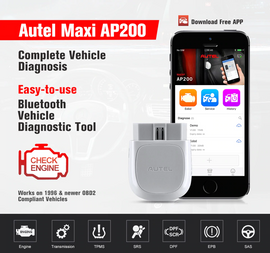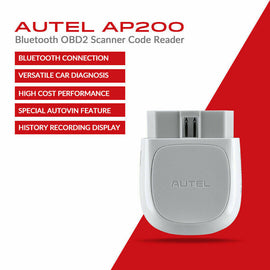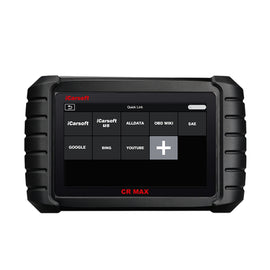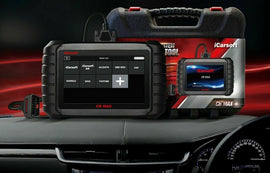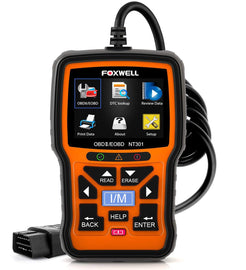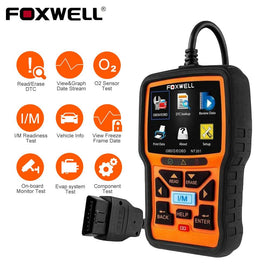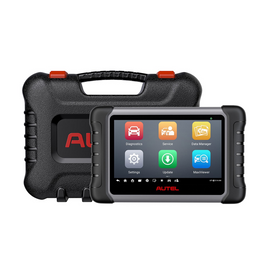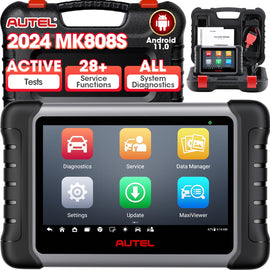A bi-directional scanner may be a term you have heard from your mechanic or any auto enthusiast. However, this might be something new for you. Before choosing an automotive diagnostic tool, it’s worth understanding what distinguishes a bi-directional scanner from a standard OBD2 device.
Someone recommended getting the Bi-directional scanner, but how can you use it for your vehicle? Let us help you determine whether you need a bi-directional scanner or if the simple OB2 tool will suffice for you.
What is a Bi-directional Scanner?
It is a diagnostic tool for cars that can send commands back to the system, in addition to reading data from the Electronic Control Unit (ECU). Unlike standard scanners, this two-way communication enables advanced car owners and mechanics to test parts, carry out operations, and confirm repairs.
With a bi-directional scanner, you can instruct the ABS module to test the radiator fan, turn on the fuel injectors, start the throttle adjustments, or conduct a self-test.
A conventional OBD2 scanner, on the other hand, is designed for auto owners, and it only reads and clears codes; active control is not possible.
The Difference Between OBD2 and Bi-Directional Scanner
Comparing an OB2 and a bi-directional scanner is almost similar to comparing a thermostat and a thermometer.
A bi-directional scanner enables you to manually test the oxygen sensor when an OBD2 scanner detects an issue, such as a malfunction, to ascertain whether the sensor is actually malfunctioning or if another component is to blame.
OBD2 scanners are ideal for regular car owners who want to view real-time data or check the check-engine light.
However, experts or workshop technicians benefit from the advanced command capabilities of bi-directional scanners. This functional difference is all about the accuracy. It provides quicker results and identifies the exact problem.

Examples And Uses Of the Best Bi-Directional Scanner For Automotive Diagnostics
How can you use the tool? Here are some real-life examples:
1. ABS and Airbag Testing:
A bi-directional scanner can instruct the module to perform activation tests, bleed the brakes, or confirm that the airbag is ready for deployment when the ABS or airbag warning lights illuminate. Standard OBD2 tools cannot start these processes.
2. Throttle and Idle Adjustments:
Throttle bodies in modern cars are electronically controlled. After cleaning or replacing a part, a bi-directional scanner for automobiles enables technicians to calibrate or reset the throttle.
3. Component Verification:
Suppose that your radiator fan isn't working. A bi-directional scanner can be manually turned on to activate the fan, rather than replacing it immediately, saving time and money. This will enable you to identify if the fan, fuse, or relay is the issue.
4. Diesel Injector and DPF Testing:
Diesel vehicles, which are popular in Australia, can have their DPF (Diesel Particulate Filter) regeneration or injector tests ordered by this scanner. This ensures efficient operation and compliance with emissions standards.
Who Should Invest in One?
The best uses for a bi-directional scanner are:
- Professional Mechanics and Workshops: To diagnose complicated systems and verify repairs, they need sophisticated capabilities.
- Fleet Owners: Fast, precise diagnostics are essential for cost control and maintenance when managing several vehicles.
- Serious Car Enthusiasts: Those who favour advanced troubleshooting and hands-on car maintenance.
A simpler auto scanner or basic diagnostic scan tool for Australian cars will work just fine, though, if you only need to check error codes occasionally.
Choosing the Best Bi-Directional Scanner for Automotive Diagnostics
Look for characteristics like these when choosing the top bi-directional scanner for automotive diagnostics:
- Vehicle Compatibility: Ensure it supports car models from Asia, Europe, North America, and Australia.
- Live Data & Graphing: Helps you identify problems more quickly by visualising sensor readings.
- Software Updates: Compatibility with newer car models is ensured by regular updates.
- Ease of Use: Even for semi-professionals, diagnostics run more smoothly with touchscreen interfaces and intuitive menus.
- Budget: Consider budget-friendly diagnostic tools with limited bi-directional functionality if you're just starting out, then upgrade as your requirements change.
Professionals and enthusiasts alike favour brands like Autel, Launch, and Foxwell because of their dependability and wide range of compatibility.
Why It Matters for Australian Car Owners
Choosing the best car diagnostic scan tool is even more crucial in Australia due to the country's diverse car market, which includes European imports, as well as utes and SUVs.
Many foreign cars have special electronic systems that might not be fully accessible by a typical OBD2 scanner. To help you test modules across various makes and models, a bi-directional scanner fills that gap.
For instance, a bi-directional scanner is necessary for tasks like recalibrating an electronic steering system in a BMW, bleeding the ABS brakes on a Ford Ranger, and performing a service reset on a Toyota Hilux. Controlling and confirming system responses in real time is just as important as identifying the problem.
Conclusion
Investing in a bi-directional scanner is a smart move for anyone serious about vehicle diagnostics and maintenance. Unlike standard OBD2 tools, it offers more precise control, enabling you to test, verify, and calibrate essential systems with greater accuracy.
Whether you manage a workshop, a fleet, or simply love working on cars, advanced tools like bi-directional scanners, GPS trackers, and key programming devices are vital for modern automotive care.
At Autolines Australia, we offer a comprehensive range of reliable and innovative automotive diagnostic solutions, designed for accuracy and performance, helping Australian car owners and professionals stay ahead with confidence.
FAQs
1. What can a bi-directional scanner do that a regular OBD2 scanner can’t?
A bi-directional scanner not only reads and clears error codes but also sends commands to vehicle systems, allowing you to test components like injectors, fans, or ABS modules for precise diagnosis.
2. Is a bi-directional scanner worth it for home mechanics?
Yes, if you enjoy advanced diagnostics. A bi-directional scanner enables home mechanics to perform system tests, verify repairs, and reduce workshop costs by offering greater control than a standard OBD2 scanner.
3. How does a bi-directional scanner help in diagnosing car problems?
It communicates directly with vehicle modules, running activation tests and controlling components. This two-way communication helps identify the exact source of faults faster and ensures more accurate repairs.

